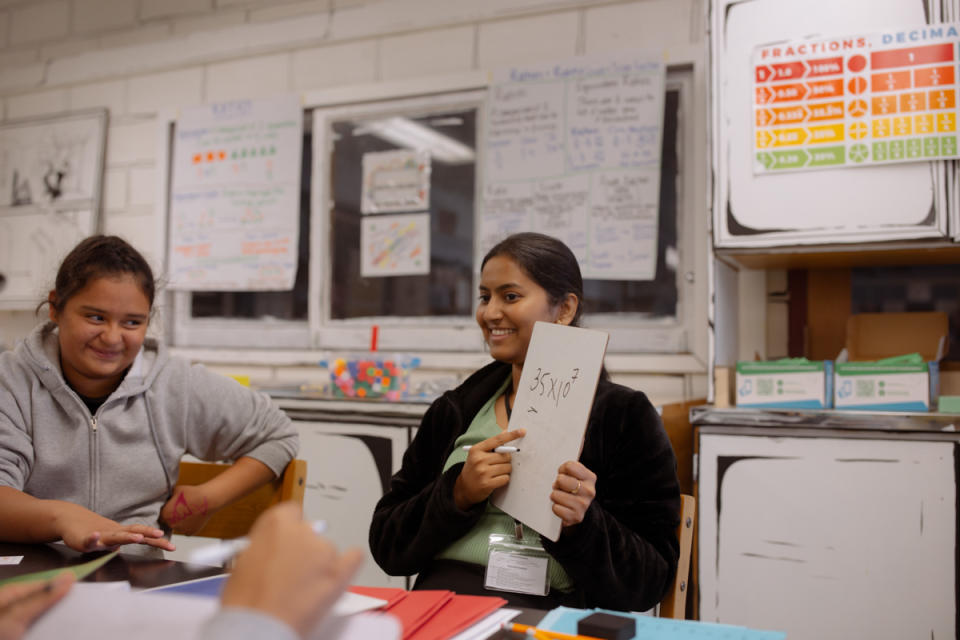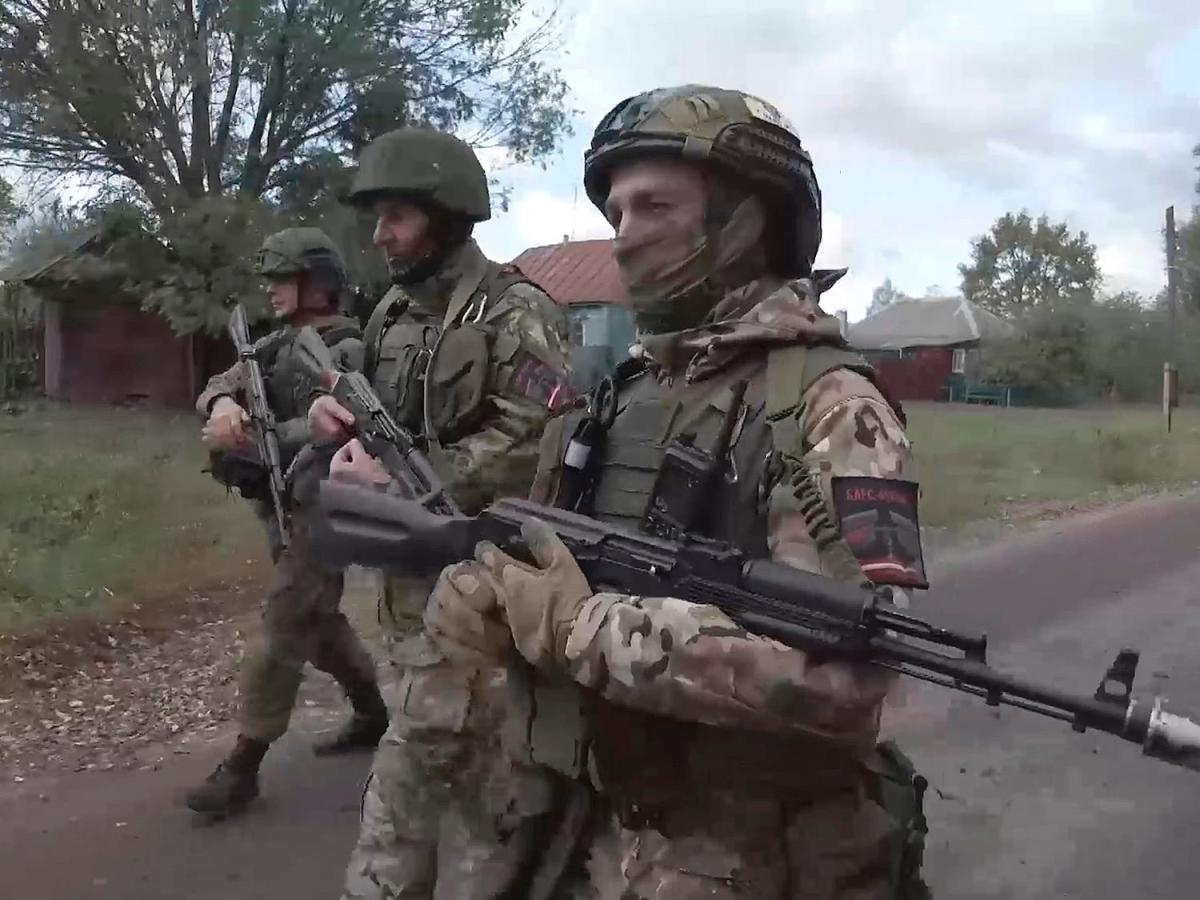A model for high dosage math tutoring employing nearly 1,000 college and graduate students has taken root across Maryland, converting some into lifelong educators and providing middle schoolers with diverse mentors.
Now in its first full academic year, the Maryland Tutoring Corps is bringing hundreds of students from Morgan State, Johns Hopkins, Towson, University of Maryland Baltimore County, and Salisbury into the lives of middle schoolers in Wicomico, Baltimore City and County public schools.
Education is at a Crossroads: Help Us Illuminate the Path Forward. Donate to The 74
“When you have 35 to 40 kids in a class and a lot of them need extra help, you as a teacher, you can’t get to everybody every day,” said Matt Barrow, Baltimore City Schools’ director of differentiated learning.
Advertisement
Advertisement
Schools across the country are finding ways to scale up their tutoring offerings to help get kids back on track. For Barrow, the impact has felt immediate and positive.

“…To see joy on kids’ faces when they’re doing math – they’re middle schoolers!,” he said. “It makes me reflect back to when I was in the classroom, wishing that the kids I had at the time had that type of opportunity for support consistently, not even just in math.”

Shradha Gawad
On a fall afternoon at Dickey Hill Elementary and Middle School, one of UMBC’s ten placements, Shradha Gawad introduced her eighth graders to the scientific notation by having them think about how far the earth was from the sun – too big of a number to actually write out.
“If small words or encouragement from me, if that makes a small change in their life and they are interested in math and able to grow with that, then that’s definitely a yes for me,” said Gawad, a master’s student in information systems. “I want to keep doing that.”
Advertisement
Advertisement
UMBC tutors began lessons by asking students how they’re feeling that day or to recap their weekends, one way they build relationships with students. If students are notably upset, tired, or not into it for whatever reason, they take small breaks to play math games.
That approach helped Rahul Sodadasi, a first year at UMBC studying cyber security, with a disengaged student. By the end of the first week, the student complimented before leaving the room, “this was really fun.”

“It’s about knowing that person,” Sodadasi said. “I know that she is an emotional person and likes to build bonds [before] she can understand … that’s how the math got into it.”
After an initial orientation, tutors are trained during monthly professional development sessions, on topics such as strategies for English language learners.
Advertisement
Advertisement
More in U.S.
They reinforce positive mistakes that show kids’ understanding of concepts, using phrases like “Not quite, but that’s great thinking and I can see why you got there,” or “what if we tried this, too?”

Advertisement
Advertisement
Tory, a seventh grader and aspiring doctor or realtor, reflected honestly, “it’s not my favorite thing, but I still do it … [This] makes me want to do it more when I’m at home.”
The program aims to be permanent, lasting long after pandemic relief funds end by requiring grantees to find funding sources, like local foundations, nonprofits and city governments, to match state funds.
“Through the Maryland Tutoring Corps, we are engineering an educational renaissance,” Governor Wes Moore said of the program as the first grantee districts were announced last fall.

With math scores reaching historic lows, Moore unveiled the $28 million grant program to revitalize middle school math for underserved students in October 2023, just a few months before tutoring was named a top priority by the Biden administration. The latest NAEP scores, or Nation’s Report Card, had revealed a bleak reality: about 3 in 4 U.S. eighth graders are not proficient in math.
Advertisement
Advertisement
Schools, eager to jumpstart tutoring but struggling to keep teaching vacancies filled and attendance up, have been transformed by district-university partnerships.
In Oklahoma, Squad of College Students Lead Math Recovery
Coaches, ranging from undergraduates to PhD and teacher candidates, are now supporting middle schoolers identified for added support by their year-end test scores or iReady diagnostic tests.

Earlier this year, the Department of Education extended federal pandemic relief funds’ spending deadlines of January 2025 through the next two academic years, to enable other districts to double down on this model of support. In nearby Washington, D.C., a similar $33 million investment is bringing high dosage tutoring to about 6,000 more kids.
Advertisement
Advertisement
In practice, Maryland’s corps adheres to research-backed best practices: ensuring small groups of no more than three meet during the school day, for maximum attendance and minimum disruption to transportation or family life; paying tutors; and prioritizing high need student populations.
High dosage tutoring, when led as theirs is in at least two 45-minute sessions per week, is known to help students develop a positive attitude toward math, feelings of connection to school, and build an academic foundation for higher paying STEM jobs down the line.
While Maryland doesn’t yet have results from tutoring done this fall, a report looking at randomized control trials from the last few decades showed students gained three to fifteen months worth of learning. It’s widely considered one of the most cost-effective supplements to classroom time, including for the most vulnerable student populations.
Being ‘Bad at Math’ is a Pervasive Concept. Can it Be Banished From Schools?
According to a prior UMBC evaluation of one of the grantee programs, 85% of students felt more confident in math. One eighth grader remarked in a survey, “I could get help, and if I got it wrong, they didn’t put me down.”
Advertisement
Advertisement
The grant has given UMBC’s pre-existing Reach Together Tutoring program new life.

“Math is something that has not been as supported as say literacy over the past several years. I do think that is shifting. I see it,” said Sara Krauss, director of school partnerships with the university.
Three years ago, UMBC’s program served 355 students across four schools. At the time, Krauss managed logistics alone, conducting interviews with hundreds of potential coaches until midnight to accommodate schedules and demand.
Today, they are serving nearly double across ten sites, utilizing curricula from Saga Education and Rocket Math. Over 1,100 students applied to tutor this year. The grant has also enabled them to rely less on carpools, providing some funds for Lyfts and vans.

Advertisement
Advertisement
As they’ve grown, they’ve streamlined other logistical puzzle pieces, like bringing fingerprinting and background check services to the university.
“That’s what this means,” said Sanfoya Ray, Baltimore City Schools’ coordinator of academic tutoring. “Knowing that there is work to do and doing the work to get it done.”
All images by Marianna McMurdock
EMEA Tribune is not involved in this news article, it is taken from our partners and or from the News Agencies. Copyright and Credit go to the News Agencies, email news@emeatribune.com Follow our WhatsApp verified Channel





